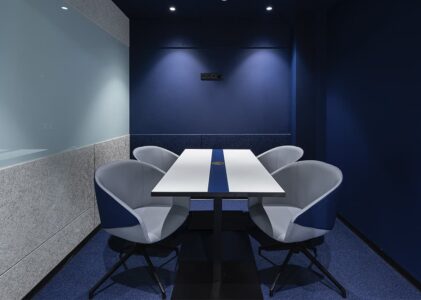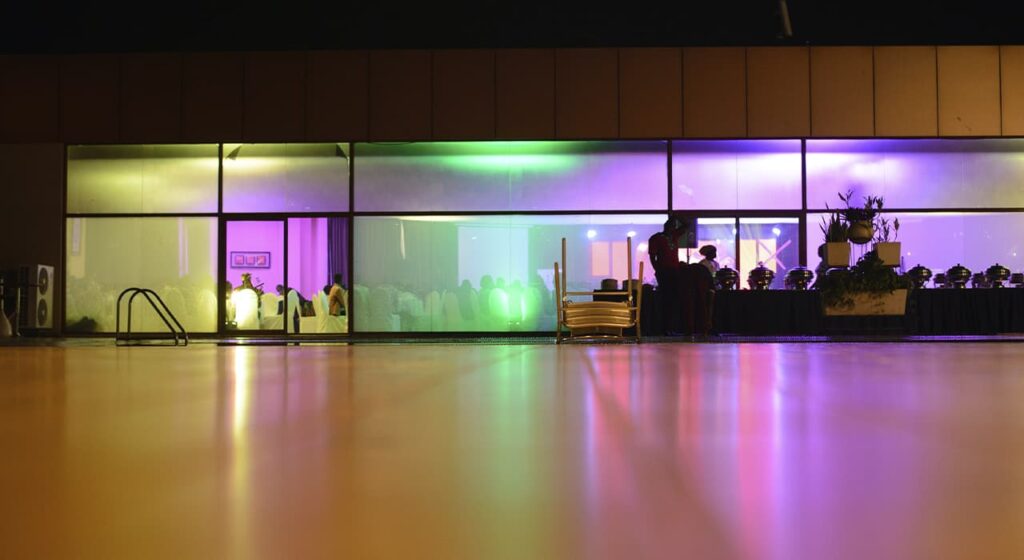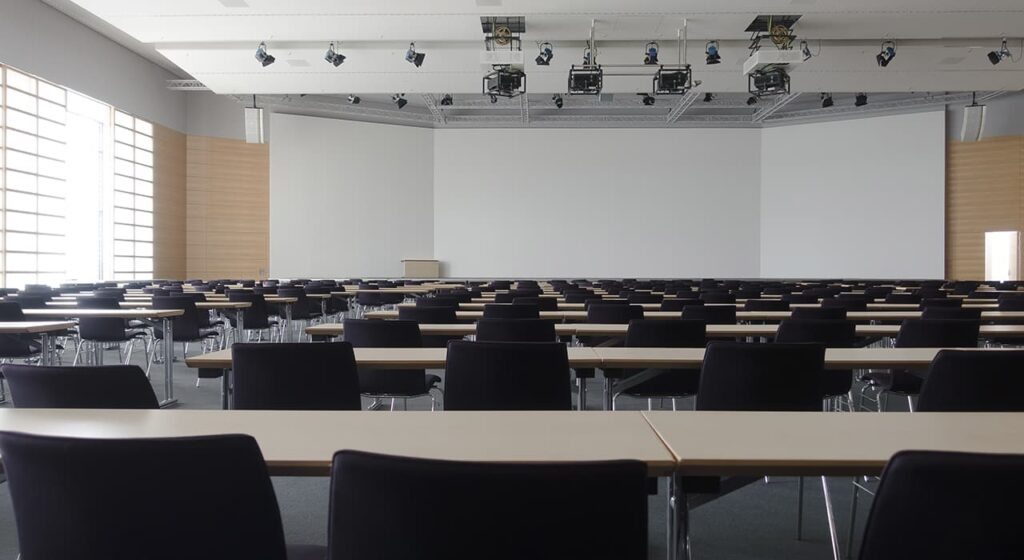There are a great many options for accommodating participants and spectators in conference rooms, but they are all special cases of the five basic options: classroom, theater, round table, negotiation, and T-shaped seating. Let’s take a closer look at them:
Classroom
This arrangement is appropriate when it is necessary to present material by one or more presenters to an average group of listeners – for example, when conducting training sessions, briefings, lectures, trainings or press conferences.
Theater
If a large number of listeners is expected during the presentation, this method of seating is the most appropriate. Extra space is created by the absence of tables and other furniture, and the chairs of participants are placed one behind the other in rows, allowing everyone to see and hear the speakers.
Round table
The most suitable variant for holding negotiations “on equal terms”. The emphasis of this layout option is on the discussion component, as the participants are in the focus of each other’s attention. The table does not necessarily have to be round, it can be composite – in the form of a square or rectangle.
Negotiations .
This option is well-proven in the meeting rooms of the largest companies in the world. It combines the convenience of communication between the participants and work with visual materials. A long oblong table allows to place video panels on both sides of the table or fix them on the ceiling, dividing the negotiation space in two.
T-Type placement
This layout has similarities to a negotiation, but is more suitable for working meetings and planning sessions. The manager is at the head of the table and leads the brainstorming session, taking turns listening to reports from subordinates or broadcasting himself.
Armed with knowledge about the options for seating participants and listeners, you can make the first conclusions about the type of conference room that is right for you. As mentioned earlier, mixed styles also have their place.



